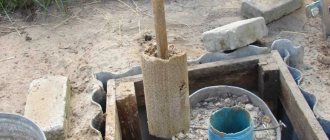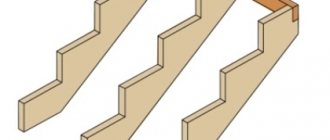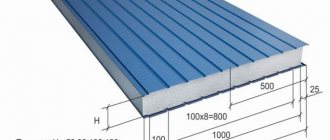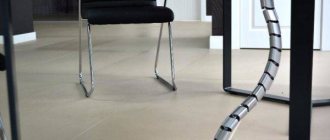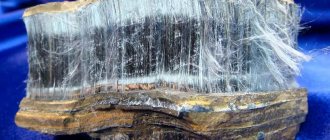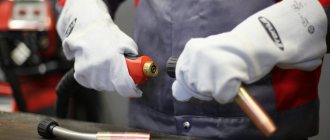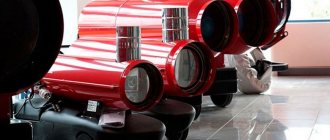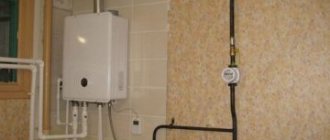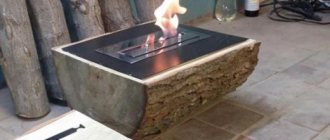Gas melting metal welding involves the use of equipment such as a gas torch. With its help, the metal surfaces to be joined are heated and melted. As a rule, all burners have a simple design, light weight, and are convenient to use. To choose the right tool for the work ahead of you, you should pay attention to the design features, as well as the types of burners.
How does a gas burner work? Operating principle
The design of a gas burner traditionally consists of an insulating sleeve, a nozzle, a diffuser, a mixing chamber, gas regulators, cable connectors, a handle equipped with a button, a cable, a connector and a tip mouthpiece. The gas burner device may include other elements - a piezoelectric element, a cooling system, and a feeding device. The presence or absence of certain components depends on the methods of supplying flammable gas.
- The injection type burner circuit includes an air supply regulator, a nozzle, a mixer, and a distribution manifold. Before final mixing, the gas-air mixture is rarefied, air is sucked in, then the stream is leveled in the diffuser and enters the collector, where it is evenly distributed among the holes.
welding torches: injection - a; non-injector - b; 1 - mouthpiece; 2 — tip tube; 3 - mixing chamber; 4 injector; 5, 6 - control valves; 7— trunk; 8 - tube; 9, 10—nipples
In turn, injection burners come in two varieties:
- with full injection or high pressure burners;
- with partial injection, or low pressure burners.
Devices of the first type are used mainly in heating boilers and for heating industrial furnaces. They ensure complete mixing of the components intended for combustion. The second type is common in furnaces for heating soldering irons, autosmokers, and in the furnaces of Strel and Strebel boilers. The combustion zone of such devices is provided with only part of the required air; a sufficient amount of it is drawn from the environment.
- Non-injection burners assume the same pressure for oxygen and fuel gas when they enter the mixer. Their design is complicated by a fan, an electric motor for drive, and air ducts. Due to these parts, non-injection burners can reach 1.9 m in length, which makes the tool not very comfortable to use.
Oxygen and combustion gas are delivered to the mixing nozzle in similar ways. From the cylinder, gases enter the burner through a tube, bypassing the control valve and the receiving nipple. In the mixing chamber, the gas flow rate decreases (as the cross section increases), and oxygen and combustible gas interact until a combustible mixture is formed that is homogeneous throughout the entire volume. Next, the mixture goes out through the nozzle onto the tube, where a welding flame is formed.
Knowing how a gas burner is structured and how it works, as well as how to correctly follow the sequence of parts, you can build such a device at home. However, it should be remembered that in order to ensure a constant rate of exit of the gas mixture from the mouthpiece, you need to carefully select the composition of the gases connected to each other, adjust the diameter of the outlet channel and pay attention to the design of the mouthpiece.
Welding torches operating on acetylene-oxygen combustible mixture
Oxy-acetylene welding uses the heat generated by the combustion of acetylene in oxygen. In terms of power, such burners are found in two common types: G2A and G3A (low and medium power burners). G2A torches are used when welding thin metal. The kit usually contains several tips of different sizes.
Particularly worth highlighting from this series are burners with a full complement of solid-drawn copper tips. The presence of solid-drawn copper tips in the G2A-mini torch kit allows you to carry out welding work in hard-to-reach places such as corner joints, where a conventional torch would be useless.
And the thickness of the copper tubes of the tips ensures a long operating time without overheating, due to good heat dissipation from the tip.
Purpose of the gas burner
A gas burner is used in those areas where stable combustion of fuel is required, the intensity and extent of which can be adjusted. Such a device can carry out:
- lighting. Open flame burners, argan oil burners, regenerative burners, and incandescent burners were popular before the invention of electricity and are rarely used today.
- heating. For example, when heating rooms, for laboratory experiments or for kitchen purposes.
welding torch Welding
torches are used in the industrial and construction fields. Depending on the type of welding, they supply a continuous stream of flammable gases to the weld site (in gas welding) or provide the arc combustion zone with shielding gas (in arc welding).
A portable gas burner for a cylinder will be useful for a tourist holiday. The sealed cylinder is reliably protected from fuel leakage, and the device with piezo ignition allows you to quickly light a fire without using matches or flint. A small can of gas will last more than one season of travel.
Note that a gas burner can be useful at home if:
- there was a need to unscrew a rusty nut;
- you need to decorate a metal or wooden surface in a vintage style;
- it is necessary to trim the ends of the nylon rope or geotextile;
- there is a need to repair the garden path using baked mass;
- you need to warm up the frozen lock;
- I want to cook meat outdoors, but I don’t have a grill. gas burner with piezo ignition
Welding torches operating on propane-oxygen combustible mixture
GZU propane torches are also used for soldering ferrous and non-ferrous metals, and less often for non-critical welding seams of ferrous metal of small thicknesses up to 3 mm. This is due to the lower temperature of the propane-oxygen mixture (up to 2,100°C), which does not allow welding to be performed on equal terms with torches running on acetylene. Nevertheless, such burners are widely used for heating and soldering non-ferrous metals with high-temperature solders.
The compactness of such welding torches, excellent operation of the valve units, allowing for “fine” adjustment of the gas supply, modern, thoughtful design - all this makes the torches convenient and reliable and allows you to work with them both in open space and indoors.
How to use a propane torch
A propane gas torch will be simply necessary when carrying out roofing work, drying casting molds, removing old paint, crimping couplings, soldering copper pipes, etc. Before using the burner, two cylinders are purchased - with oxygen and propane - on which reduction gears are mounted. The latter provide optimal pressure.
When the reducers are connected to the gas burner using hoses, you can unscrew the valves and release the gas. Before igniting, the gases pass through an injector where they are mixed. The temperature of the emerging flame exceeds 2 thousand degrees.
To carry out work, first open the valve with flammable gas, then with oxygen. The mixture coming out of the nozzle must be set on fire. The pressure of the consumables is adjusted based on instrument readings or flame color. Afterwards, using a filler wire, a weld pool is formed, and the molten metal must be moved, forming a seam. When the work is completed, the filler wire is removed and the gas mixture is extinguished.
Popular types
There are many models of gas burners, each with its own design features. Which welding mode to choose depends on the materials being welded and the amount of work . If a pipe leaks at home, it can be repaired with a simple piezotorch with filler wire.
To make plumbing and repair a car, you will need a manual semi-automatic device or a gas device operating in TIG mode.
For semi-automatic
The semi-automatic machine works with filler and welding wire, which is automatically fed into the bath at a constant speed. It can only be used as an additive and melts due to burning gas. In most machines, the wire is also an electrode, at the end of which an arc is created.
All modes are configured before welding begins . After this, with a change in current strength, the amount of supplied gas and the wire feed speed increase.
The length of the hose for supplying consumables is 3 – 5 m.
A simple device allows you to assemble the burner yourself, even without having a drawing yourself. Any house requires welding work during construction and furnishing. The amount of work is small and buying a device is expensive; making a homemade one will cost less.
For argon arc
Argon arc welding is performed in TIG mode. It allows you to cook refractory materials such as aluminum. In the center of the nozzle there is a holder for a tungsten electrode. The arc is constantly in a protective atmosphere.
The gas is adjusted using a valve on the handle. Sleeve length 4 – 8 m.
For spot welding
The devices operate in TIG – WIG mode. They are distinguished from other nozzles by a shaped nozzle, which covers a flint mouthpiece with a tungsten non-consumable electrode. The principle of operation is the spot melting of metal on one or both sides . The connection has neat weld points. No filler wire is used; only the metal of the parts being welded is melted.
At the moment of formation of the connection, the non-consumable electrode is located inside the mouthpiece in a gas environment, which creates additional heating and high pressure. It takes a few seconds to create one weld point. The welder's hand presses the mouthpiece to the metal and presses the button.
To use spot welding, a copper sheet is placed under the parts - an underlayer that removes excess heat and at the same time acts as a current collector.
At the end of welding, the wire afterburner turns on. It completes the formation of the welding site, preventing the wire from cooling sharply.
What gas can be used
Acetylene, hydrogen, and substitute gases (natural gas, propane-butane) can be used as combustible materials for a gas burner. Some designs operate on liquid flammable substances and waste oil.
gas burner cylinder marking
The combustible substance enters the acetylene burner from the generator apparatus, where calcium carbide decomposes into slaked lime and acetylene. The gas for the burner has a pressure of 100-150 mmHg. Nitrogen obtained from atmospheric air is used as a shielding gas, which prevents the formation of scale, and water is used as a catalyst for the decomposition of carbide.
The hydrogen torch is the most popular among similar equipment designed for gas-flame processing. It is important that when using it, only water vapor is released, so it is the safest. When an aqueous alkali solution decomposes, hydrogen burns, followed by the release of energy, which is needed to speed up welding. Hydrogen protects the weld from exposure to oxygen, thereby preventing oxidation of surfaces.
Many owners have an idea of how a liquid fuel gas burner works, since the operation of a kerosene stove is based on this principle. When heated in a special coil, the flammable liquid turns into gas and due to this, significant savings are achieved during subsequent combustion. As a rule, kerosene and Galosha gasoline are used as liquid fuel.
Knowing how to use a gas burner during mining, or a Babington burner, you can significantly save on consumables and reduce the cost of work. Such designs use motor, compressor, and any vegetable oil as fuel. The fuel enters a spherical part, from which it is blown off by a stream of compressed air. The resulting small droplets then ignite.
Stages of work when laying material using a roofing torch
If roofing felt is used as a waterproofing material, you cannot do without a gas burner.
It is also necessary for covering the roof with modern built-up types of materials. The entire process of working with the device can be divided into several stages.
- First you need to prepare the base for further laying of the material. For this purpose, it should be cleared of debris. If necessary, the surface must also be leveled using a concrete screed.
- After this, the rolled material is rolled out over the entire surface so that adjacent sheets form an overlap with a width of 85 to 90 mm.
- Having completed the leveling and markings, the rolls must be rolled up again and strengthened at the base of the roof using a torch. Heating the lower part of the roll and the base of the roof using a burner flame, the material is slowly rolled out, pressing it to the base.
To avoid the formation of wrinkles and air bubbles, you need to run a hand roller along the attached canvas. At the final stage of the work, a roofing gas burner is used to heat the seams of the overlapping material. After this, the seams should be rolled again using a hand roller.
When operating gas burners, you need to know several important points:
- The use of this device is possible at temperatures not lower than minus 15 degrees;
- if work is carried out at a lower temperature, then you can use a liquid fuel burner;
- when using a gas burner for laying roofing with high quality characteristics, from 500 to 600 m of roofing material can be laid per day;
- Since the work is carried out outdoors, the gas burner must provide a stable supply of flame and reliably protect it from being blown out by the wind.
Indicators related to the flame of the device
gas burner flame
The burner flame power can be low (fuel consumption is 25-400 dm3/h), medium (400-2800 dm3/h) and high (2800-7000 dm3/h). Knowing the maximum and minimum power of a particular burner, you can calculate the fuel consumption and the amount of energy required to meet technological needs.
According to the number of flames, burners are single-flame and multi-flame. If the first type is used primarily for manual oxygen-acetylene welding, the second is widely used for mechanized flame soldering or heating.
Related categories
The information on the price and availability of goods presented on this website is valid as of the current date. All prices are indicated in rubles, including VAT. All product specifications and images are provided by the manufacturers. The manufacturer reserves the right to change the characteristics/appearance of the product without prior notice, and therefore, on the date of purchase of the product, they may differ from those presented on this website. Changes and text errors are possible. Please check the availability of the required characteristics and equipment at the time of purchasing the product.
We will deliver the goods you have chosen on the OBI website to a place convenient for you: to your home, to your country house, to your office.
Select products, place an order on the website, specifying delivery, and receive it at a time convenient for you at the address you specified. You can pay for your order and delivery in cash upon receipt.
Delivery is carried out within 1-2 days; 3 time slots available.
To save your time, we will collect all the products you have chosen and prepare your order for collection at the OBI hypermarket.
Select a product, place an order on the website and pick it up yourself at a time convenient for you. You can pay for your order on the spot upon receipt.
First, you need to select the OBI hypermarket where you plan to receive your order. The currently selected hypermodel is indicated in the upper left corner of the site.
Advantages and disadvantages of a gas torch for welding
The gas burner has the following positive qualities:
- a large number of types of devices;
- safety during operation;
- most models are compact and light weight;
- no lengthy preparation for use is required;
- does not leave soot or odor;
- the pressure of the fire can be adjusted;
- You can always find out what the device consists of and, if necessary, assemble a homemade burner.
Disadvantages of using a burner:
- at temperatures below -30°C, operation of the device becomes problematic;
- You cannot refill a flammable container yourself.
Rules for safe operation of equipment
If used incorrectly, gas cylinder equipment can become a source of a strong explosion or fire.
When performing welding work, you should definitely use personal protective equipment: glasses, gloves, special shoes.
Before starting work, you need to thoroughly inspect the equipment for damage. If the equipment gets dirty, be sure to remove the dirt
You can work with propane cylinders only in well-ventilated areas, and the air temperature should not be below 0 °C.
Absolutely forbidden:
- Work near open flames.
- Keep the cylinder tilted when working.
- Place the vessels in the sun.
- Carry out work without a gearbox.
- Heat the gearbox over an open fire.
In addition, if you smell gas, you must immediately stop working and turn off the valve on the cylinder. We also recommend that you familiarize yourself with the main reasons for the explosion of gas cylinders.
When working without personal protective equipment, you can get burned, not only from an open flame, but also from accidentally touching hot parts.
If the considered homemade burners are not suitable for you, we recommend that you familiarize yourself with other options for making useful homemade products discussed in our articles - a burner made from a blowtorch and a burner for a sauna stove.
Connection standards
There are quite a few different replacement cartridges on the market. It is customary to distinguish the following connection types:
Such cartridges comply with European standards. The thread of such products is 7/16. Most often you can find products with a volume of 110, 230 and 450 grams. There are several types of threaded cylinders of this standard, the first produce a temperature of about 1300 degrees, and the second, which uses copper soldering, produces a temperature from 1500 to 2500 degrees. The level of combustion temperature directly depends on the characteristics of the gas mixture. The burner is attached to such a product using screw-on methods.
These cartridges comply with American MAPP standards. Mostly they are filled with a special mixture intended for soldering copper. Its combustion temperature varies from 1500 to 2500 thousand degrees. The burner is also attached by screwing.
Products of this standard are among the most widespread and inexpensive. The cylinder is fixed using a special fastener. Additionally, the product is equipped with a safety valve.
This type of product is used primarily for refilling various products.

